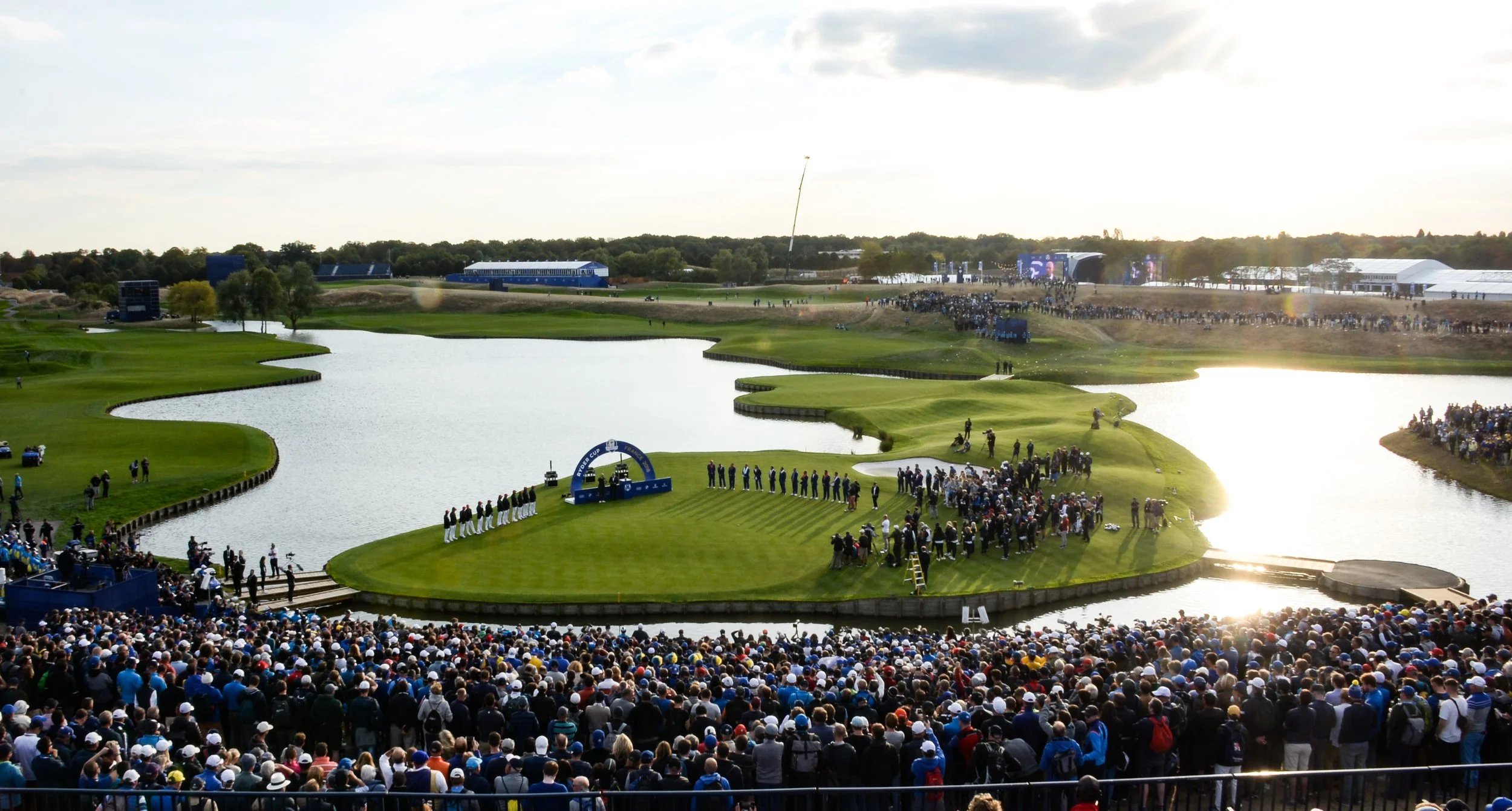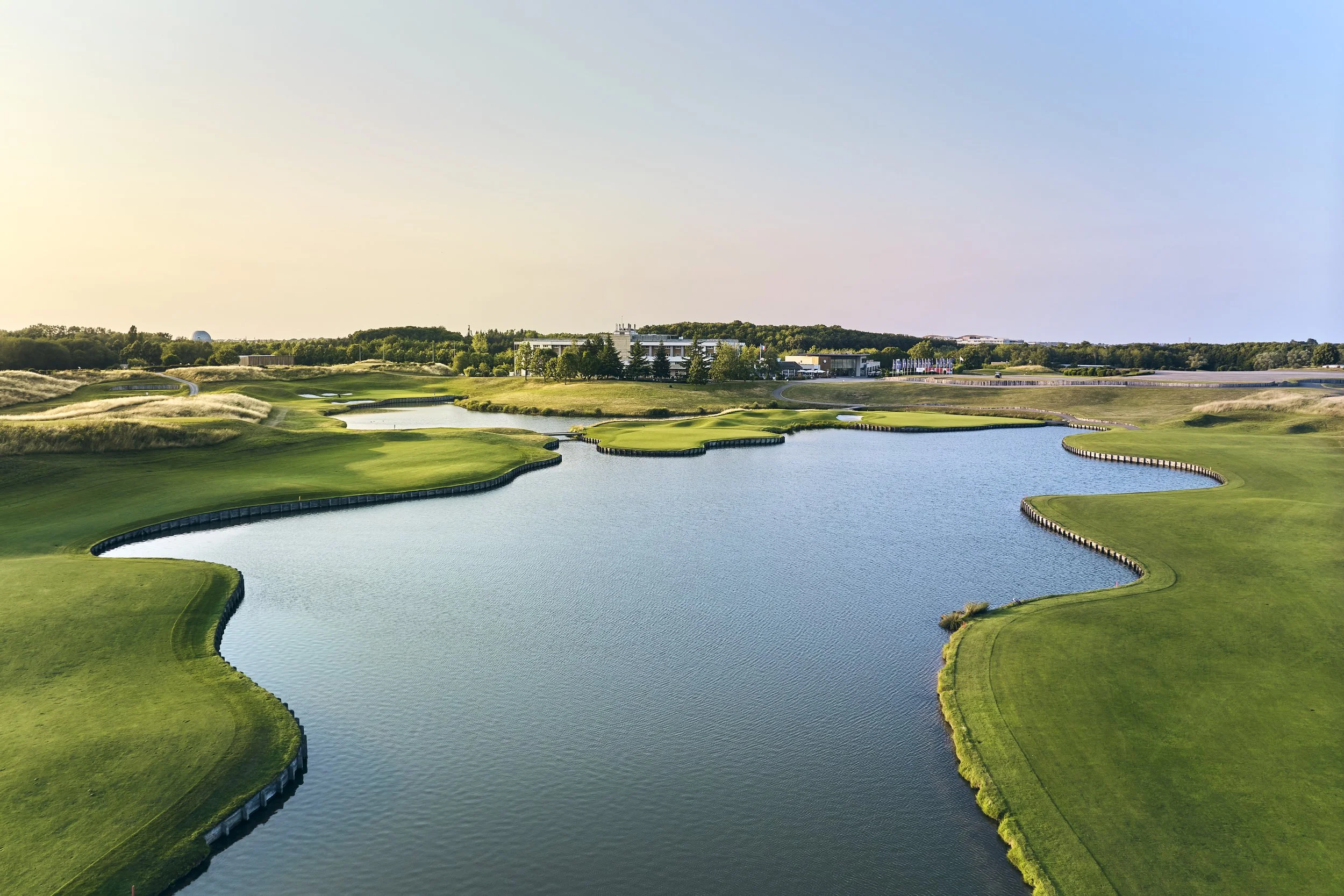
Le Golf National Albatros Course: Premier Golf Destination
In the landscape of world golf, few venues represent a nation's sporting ambition as vividly as Le Golf National. Situated in the Parisian suburb of Guyancourt, a stone's throw from the historic grandeur of Versailles, this is not a club steeped in centuries of quiet evolution. Instead, it is a modern amphitheater, a purpose-built stadium for golf, conceived and constructed with the express intention of hosting the game's most significant events. Its identity is inextricably linked to its status as the property of the French Golf Federation (Fédération Française de Golf, or FFG), making it less a private enclave and more a national institution—a symbol of France's commitment to claiming a prominent place on the global golf stage.
This ambition has been spectacularly realized. Le Golf National holds a singular, unparalleled distinction in the annals of the sport: it is the only golf facility in the world to have hosted both the Ryder Cup (2018) and the Olympic Games (2024). This historic double has cemented its legacy, transforming it from a national asset into a global landmark. The sprawling 139-hectare complex features a total of 45 holes, anchored by the world-famous L'Albatros course, the stage for its greatest triumphs. It is supported by the challenging 18-hole L'Aigle course and the shorter 9-hole L'Oiselet course, creating a comprehensive facility that caters to the entire spectrum of the golfing public.
The story of Le Golf National is one of bold vision, engineering prowess, and architectural controversy. It is a study in the philosophy of "stadium golf," a concept that prioritizes the spectator experience and the dramatic narrative of elite competition. This has led to a fascinating dichotomy: a venue lauded by the world's best players for its strategic rigor, yet sometimes viewed by amateurs as a beautiful but brutalist creation lacking the organic charm of its older European peers. This report will delve into the complex history of its design, provide an in-depth analysis of its three distinct courses, chronicle its prestigious tournament legacy, and detail the full suite of amenities available to visitors. Finally, it will examine its critical reception and explore its continuous evolution, culminating in the transformative renovations that will define its future for decades to come.
L'Albatros: A Deep Dive into a Modern Championship Masterpiece
The Albatros course is the crown jewel of Le Golf National, a layout conceived and executed to test the strategic acumen, technical skill, and mental fortitude of the world's greatest golfers. It is a modern masterpiece that has earned its place among the most respected and feared championship venues in Europe.
Le Golf National Albatros Course
Le Golf National Albatros course specifications alone signal its intent. For championship play, it is a formidable par 71 that can be stretched to 7,331 yards (6,703 m). During the 2024 Olympic Games, it was set up at 7,174 yards (par 71) for the men's competition and 6,374 yards (par 72) for the women's, with the par changing at the 18th hole. Its defining challenge is a relentless demand for precision. The design features narrow fairways framed by punishing, links-style fescue rough, slick and subtly undulating greens, and the ever-present threat of water, which comes into play on a staggering 11 of the 18 holes.
For the amateur golfer, the Albatros presents one of the sternest tests imaginable. This is quantified by its maximum Slope Rating of 155, the highest possible value on the scale, which indicates its extreme difficulty relative to a scratch golfer.This difficulty is borne out in professional tournament results; the average winning score across numerous editions of the Open de France is consistently one of the highest on the DP World Tour, often hovering around 10-under-par. It is a course that does not yield low scores easily.
A Hole-by-Hole Strategic Guide
Each hole on the Albatros was given a symbolic name by Hubert Chesneau, hinting at the specific challenge it presents.The following is a strategic tour of this formidable layout, synthesizing expert analysis of its challenges.
Hole 1: En Avant! (Forward!) - Par 4, 419 yards. An intimidating opening tee shot with a lake guarding the entire left side. The fairway narrows the further one drives, making a fairway wood or long iron the prudent play to set up a mid-iron approach to a green protected by water and bunkers.
Hole 2: L'Appontage (The Landing) - Par 3, 210 yards. A classic and terrifying par 3 that requires a full carry over the same lake to the green. The further left the pin is, the more water must be carried. It is a signature von Hagge-style hole demanding a perfectly struck long iron.
Hole 3: Le Mérantais - Par 5, 558 yards. The first par 5 presents a clear risk-reward opportunity. A well-placed drive down the left side can set up a chance to reach the green in two, but water and thick rough penalize any shot to the right. A cavernous bunker short of the green must be avoided.
Hole 4: Châteaufort - Par 4, 486 yards. A long, demanding par 4 that plays uphill to an elevated and heavily sloped green. A powerful and accurate drive is essential. This hole is one of three being significantly redesigned during the 2024-2026 renovation.
Hole 5: Plein Gaz (Full Throttle) - Par 4, 405 yards. A shorter par 4 that offers a birdie opportunity, but strategically placed fairway bunkers and deep new greenside bunkers demand respect. This hole is also part of the major redesign project.
Hole 6: Maïs ou Colza (Corn or Rapeseed) - Par 4, 380 yards. A unique, bunker-less hole where the primary challenge is judging the distance on the blind approach shot to a green situated below the level of the fairway. This hole is the third to be redesigned.
Hole 7: Le Dromadaire (The Dromedary) - Par 4, 457 yards. A very challenging hole featuring an elevated, undulating fairway (the "dromedary's hump") and tall fescue. It requires two powerful and precise shots to find the green in regulation.
Hole 8: Le Green Keeper (The Greenkeeper) - Par 3, 208 yards. The hole widely credited to Chesneau's design hand. It's a tough long iron shot to a large, severely sloping green guarded by a single, deep pot bunker at its front.
Hole 9: Vent Debout (Headwind) - Par 5, 579 yards. A true three-shot par 5, often playing into the prevailing wind. Reaching the green requires navigating to the longest and narrowest putting surface on the course, which is well-defended by deep bunkers.
Hole 10: La Mare aux Foulques (The Coot's Pond) - Par 4, 375 yards. A short, dogleg-right par 4 where strategy trumps power. A long iron off the tee to the center of the fairway is the wise play, avoiding a large bunker and a water hazard on the left to set up a birdie chance.
Hole 11: Les Grenouilles (The Frogs) - Par 3, 178 yards. A beautiful but treacherous par 3 over water to a sloped green. The hole was revamped in 2016, extending the water hazard and adding bunkers behind the green, making par a difficult score to secure.
Hole 12: Le Goulet (The Gullet) - Par 4, 433 yards. A demanding tee shot that must be threaded through a narrow chute created by large mounds on either side of the fairway, setting up a challenging approach.
Hole 13: L'Île aux Chênes (The Isle of Oaks) - Par 4, 415 yards. Often cited by critics as one of the prettiest holes on the course, it features an old-fashioned aesthetic. The approach shot is played over a pond to a green beautifully framed by mature oak trees.
Hole 14: Les Collines de Colin (Colin's Hills) - Par 5, 544 yards. The final par 5 offers a scoring opportunity for those who can successfully navigate its defenses. While reachable in two, the green is two-tiered and protected by a massive bunker complex on the left.
"The Gauntlet": Deconstructing the Famed Finishing Four
The climax of a round on the Albatros is its final four-hole stretch, a sequence of holes so dramatic and difficult that it has been nicknamed "The Gauntlet". This was a core element of the von Hagge and Baril stadium design, engineered to produce thrilling conclusions to championships. It is one of the most exciting and decisive finishes in all of golf.
Hole 15: Le Juge (The Judge) - Par 4, 408 yards. The Judge is aptly named, as it delivers swift and severe sentences for any misjudgment. A lake runs down the entire right side of the fairway before wrapping itself around a daunting peninsula green. The tee shot demands a choice: play safe to the left, leaving a longer approach, or flirt with the water on the right to gain a better angle and shorter shot in. Par is an exceptional score here.
Hole 16: L'Appel (The Call) - Par 3, 177 yards. The shortest par 3 on the course plays downhill to a green that feels like an island. Water is a huge threat on the right, and the surrounding mounds and bunkers are positioned to repel any shot that is not perfectly struck. Bailing out left leaves a terrifying downhill chip or bunker shot back towards the hazard. It is a hole that tests the nerves of even the most seasoned professional.
Hole 17: Le Verdict (The Verdict) - Par 4, 480 yards. This hole delivers its verdict through sheer brute force. Deceptively, it has no water hazards or bunkers. However, its challenge comes from its immense length, an uphill tee shot to a fairway full of humps and bumps, and a green that slopes severely from right to left. It plays more like a par 5 for amateurs and is a grueling par 4 for the pros.
Hole 18: La Foule (The Crowd) - Par 4, 471 yards. An epic and terrifying finishing hole, designed for maximum drama in front of the crowd-filled amphitheater. For amateurs, it plays as a par 5. The tee shot must be threaded through a narrow corridor with water looming left and deep pot bunkers right. The second shot is one of the most intimidating in golf: a long carry over water to a green complex that is surrounded by the hazard on three sides. Inspired by the island green at TPC Sawgrass, it has been ranked as one of the hardest finishing holes in championship golf.







